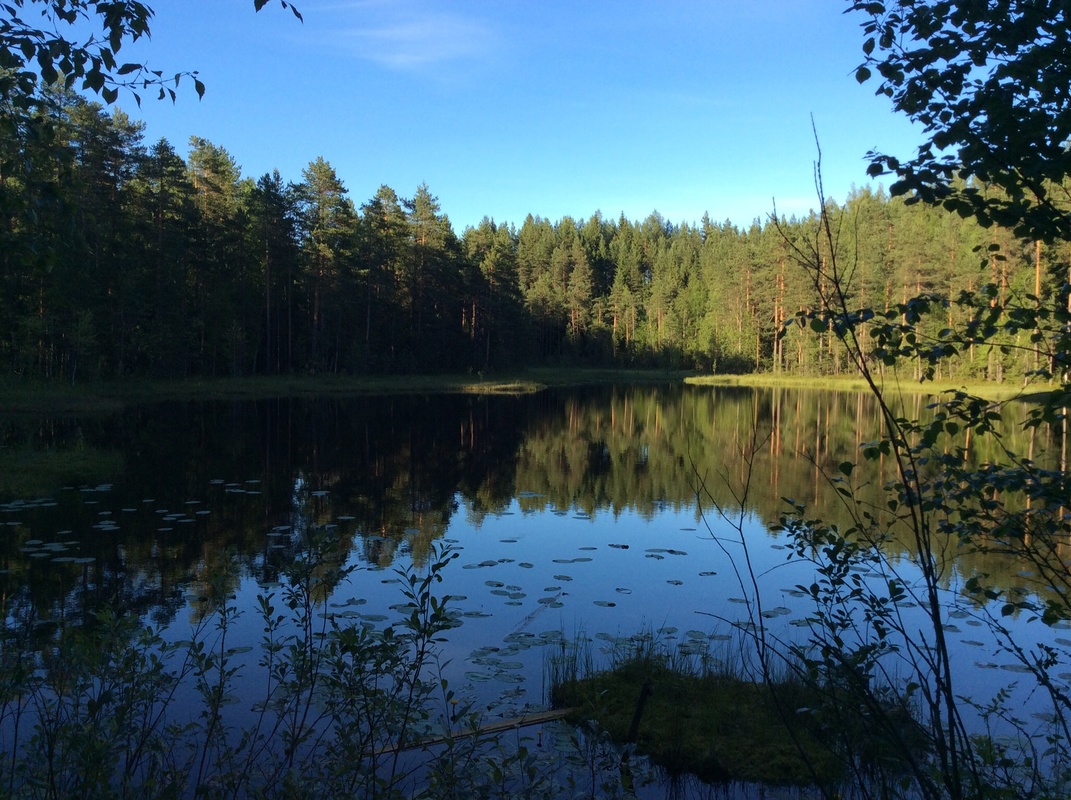3.4 Signs of retreating continental glaciers
| Sign | Description |
|---|---|
| Terminal moraine | Moraine and other materials accumulated near the edge of the ice → e.g. the Salpausselkä ridges. |
| Giant's cauldron | Rocks caught in the glacial stream drilled holes in the bedrock. |
| Eskers | The delta of a river accumulated sand and other materials. When the delta moved in a certain direction, the series of deltas formed eskers. |
| Kettles and kettle lakes | A large boulder of ice melted in an esker, creating a large hole in the ground. |
| Clay layers | Clay accumulated near the floor of bodies of water, forming thick layers. |
When the climate began to grow warmer approximately 13 000 years ago, the edges of the continental ice that covered most of Fennoscandia began to melt at a quicker rate during the summer than new ice could form on top of the ice during the winter. This is how the edge of the continental ice sheet began to retreat slowly towards its place of origin.
This retreat was not smooth and steady, as the climate could temporarily grow colder and leave the retreating edge of the ice sheet stay still for long periods of time. When this happened, large amounts of till and other material carried by the water of the melting glacier accumulated near the edges of the ice sheet. This caused large ridges of terminal moraine to form on the borders of the ice sheet. This is how the Finnish Salpausselkä ridges were formed.
As the continental glacier melted, various currents of melting water began to flow both inside and below it. These currents carried large amounts of loose material with them. Finally, the currents flowed outside the glacier and created valleys. Over time, these valleys became series of ridges known as eskers, which are very common in Finland.

Sometimes, small boulders could be caught in the rapid streams of melting water. These rocks would stay in place but rotate according to the current, drilling deep holes known as giant's cauldrons in the bedrock. The largest such fromation in Finland is the Juomapata cauldron near Salla, which is approximately 13 meters deep and 14 meters in diameter.
The melting ice could also form holes in the soil. Sometimes, a boulder of ice could be separated from the main glacier and be covered by sand and gravel. When the boulder melted, the material that covered it fell down and formed a kettle. These kettles were often filled with water, creating kettle lakes.
When the melting of the continental ice sheet slowed down, it created bodies of water near its edges. These bodies of water accumulated loose rock material, which ultimately condensed into layers of clay. These clay layers can be used to estimate the time span at which the continental glacier retreated back towards the northwest.